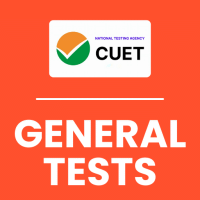CUET Commerce Exam > CUET Commerce Questions > What does the retraction index measure in aca...
Start Learning for Free
What does the retraction index measure in academic journals?
- a)The total number of papers published
- b)The frequency of retractions in relation to published papers
- c)The impact factor of the journal
- d)The number of citations received by articles
Correct answer is option 'B'. Can you explain this answer?
Verified Answer
What does the retraction index measure in academic journals?a) The tot...
The retraction index measures the frequency of retractions in relation to the total number of papers published in a specific journal. It is calculated by multiplying the number of retractions by 1,000 and dividing by the total number of papers published over a set timeframe. This index helps researchers understand the reliability of the journal and its published work, indicating how often significant issues arise.
Most Upvoted Answer
What does the retraction index measure in academic journals?a) The tot...
Understanding the Retraction Index
The retraction index is an important metric in the realm of academic publishing, providing insights into the integrity and reliability of research findings.
What is the Retraction Index?
- The retraction index measures the frequency of retractions in relation to the total number of published papers within a specific academic journal.
- It serves as an indicator of the journal's commitment to maintaining quality and ethical standards in research publications.
Importance of the Retraction Index
- Quality Control: A high retraction index may signal issues with the publication process, such as inadequate peer review or ethical violations.
- Research Integrity: It helps researchers and readers gauge the reliability of the journal's published content.
- Impact on Reputation: Journals with a lower retraction index are generally perceived as more trustworthy, enhancing their reputation in academic circles.
How is it calculated?
- The retraction index is typically calculated by dividing the number of retracted articles by the total number of articles published in the journal over a certain period.
- For instance, if a journal publishes 1000 articles and has 5 retractions, the retraction index would be 0.5%, indicating a relatively low frequency of retractions.
Conclusion
In summary, the retraction index is a vital measure for assessing the credibility of academic journals. By understanding this metric, researchers can make informed decisions about where to publish or which sources to trust for their work.
The retraction index is an important metric in the realm of academic publishing, providing insights into the integrity and reliability of research findings.
What is the Retraction Index?
- The retraction index measures the frequency of retractions in relation to the total number of published papers within a specific academic journal.
- It serves as an indicator of the journal's commitment to maintaining quality and ethical standards in research publications.
Importance of the Retraction Index
- Quality Control: A high retraction index may signal issues with the publication process, such as inadequate peer review or ethical violations.
- Research Integrity: It helps researchers and readers gauge the reliability of the journal's published content.
- Impact on Reputation: Journals with a lower retraction index are generally perceived as more trustworthy, enhancing their reputation in academic circles.
How is it calculated?
- The retraction index is typically calculated by dividing the number of retracted articles by the total number of articles published in the journal over a certain period.
- For instance, if a journal publishes 1000 articles and has 5 retractions, the retraction index would be 0.5%, indicating a relatively low frequency of retractions.
Conclusion
In summary, the retraction index is a vital measure for assessing the credibility of academic journals. By understanding this metric, researchers can make informed decisions about where to publish or which sources to trust for their work.

|
Explore Courses for CUET Commerce exam
|

|
Similar CUET Commerce Doubts
Question Description
What does the retraction index measure in academic journals?a) The total number of papers publishedb) The frequency of retractions in relation to published papersc) The impact factor of the journald) The number of citations received by articlesCorrect answer is option 'B'. Can you explain this answer? for CUET Commerce 2025 is part of CUET Commerce preparation. The Question and answers have been prepared according to the CUET Commerce exam syllabus. Information about What does the retraction index measure in academic journals?a) The total number of papers publishedb) The frequency of retractions in relation to published papersc) The impact factor of the journald) The number of citations received by articlesCorrect answer is option 'B'. Can you explain this answer? covers all topics & solutions for CUET Commerce 2025 Exam. Find important definitions, questions, meanings, examples, exercises and tests below for What does the retraction index measure in academic journals?a) The total number of papers publishedb) The frequency of retractions in relation to published papersc) The impact factor of the journald) The number of citations received by articlesCorrect answer is option 'B'. Can you explain this answer?.
What does the retraction index measure in academic journals?a) The total number of papers publishedb) The frequency of retractions in relation to published papersc) The impact factor of the journald) The number of citations received by articlesCorrect answer is option 'B'. Can you explain this answer? for CUET Commerce 2025 is part of CUET Commerce preparation. The Question and answers have been prepared according to the CUET Commerce exam syllabus. Information about What does the retraction index measure in academic journals?a) The total number of papers publishedb) The frequency of retractions in relation to published papersc) The impact factor of the journald) The number of citations received by articlesCorrect answer is option 'B'. Can you explain this answer? covers all topics & solutions for CUET Commerce 2025 Exam. Find important definitions, questions, meanings, examples, exercises and tests below for What does the retraction index measure in academic journals?a) The total number of papers publishedb) The frequency of retractions in relation to published papersc) The impact factor of the journald) The number of citations received by articlesCorrect answer is option 'B'. Can you explain this answer?.
Solutions for What does the retraction index measure in academic journals?a) The total number of papers publishedb) The frequency of retractions in relation to published papersc) The impact factor of the journald) The number of citations received by articlesCorrect answer is option 'B'. Can you explain this answer? in English & in Hindi are available as part of our courses for CUET Commerce.
Download more important topics, notes, lectures and mock test series for CUET Commerce Exam by signing up for free.
Here you can find the meaning of What does the retraction index measure in academic journals?a) The total number of papers publishedb) The frequency of retractions in relation to published papersc) The impact factor of the journald) The number of citations received by articlesCorrect answer is option 'B'. Can you explain this answer? defined & explained in the simplest way possible. Besides giving the explanation of
What does the retraction index measure in academic journals?a) The total number of papers publishedb) The frequency of retractions in relation to published papersc) The impact factor of the journald) The number of citations received by articlesCorrect answer is option 'B'. Can you explain this answer?, a detailed solution for What does the retraction index measure in academic journals?a) The total number of papers publishedb) The frequency of retractions in relation to published papersc) The impact factor of the journald) The number of citations received by articlesCorrect answer is option 'B'. Can you explain this answer? has been provided alongside types of What does the retraction index measure in academic journals?a) The total number of papers publishedb) The frequency of retractions in relation to published papersc) The impact factor of the journald) The number of citations received by articlesCorrect answer is option 'B'. Can you explain this answer? theory, EduRev gives you an
ample number of questions to practice What does the retraction index measure in academic journals?a) The total number of papers publishedb) The frequency of retractions in relation to published papersc) The impact factor of the journald) The number of citations received by articlesCorrect answer is option 'B'. Can you explain this answer? tests, examples and also practice CUET Commerce tests.

|
Explore Courses for CUET Commerce exam
|

|
Signup to solve all Doubts
Signup to see your scores go up within 7 days! Learn & Practice with 1000+ FREE Notes, Videos & Tests.























